Pearl Zhu's Blog, page 1266
December 26, 2016
CIOs as “Chief Inquisitive Officer: A set of Q&As about Digital CIOs’ Leadership (IV)
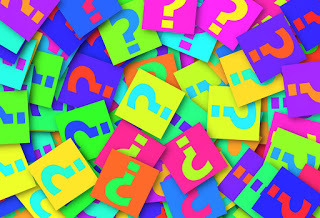 Modern CIOs face many challenges, it is not sufficient to only keep the lights on. Regardless of which industry or the nature of organization you are in, being a digital leader will need to master the art of creating unique, differentiating value from piles of commoditized technologies and take advantage of the emergent digital trend as well; digital CIOs also have multiple personas, “Chief Innovation Officer,” “Chief Insight Officer,” “Chief Improvement Officer,” “Chief Information Officer,” and here, we discuss CIOs as “Chief Inquisitive Officer,” with a set of Q&As to lead digital transformation.
Modern CIOs face many challenges, it is not sufficient to only keep the lights on. Regardless of which industry or the nature of organization you are in, being a digital leader will need to master the art of creating unique, differentiating value from piles of commoditized technologies and take advantage of the emergent digital trend as well; digital CIOs also have multiple personas, “Chief Innovation Officer,” “Chief Insight Officer,” “Chief Improvement Officer,” “Chief Information Officer,” and here, we discuss CIOs as “Chief Inquisitive Officer,” with a set of Q&As to lead digital transformation.
Q16: Shall a CIO be a General Manager of IT or a SME of all IT Domains? Today’s CIOs have multiple roles to play and take broader leadership responsibilities in transforming their organizations. Should a CIO be a general manager of IT or a subject matter expert (SME) of all IT domains?
Q17: Should CIOs be a strategic advisor or the hands-on manager? Compared to other traditional executive positions, CIO is a considerably new role with more than two decades of history; due to technology's change nature, IT and CIOs seem always to be in hot seat, need to continue to be refreshed and adaptable; due to misunderstanding of IT, many organizations also unrealistically want their CIOs to be good at everything, so contemporary CIOs face another tough choice: being a strategic leader or hands-on manager?
Q18 Are you an “Atypical CIO” or a “Stereotypical CIO”?Traditional IT organizations have been perceived as technical support centers and help desks, and traditional CIOs have been portrayed as technology geeks to keep the lights on. Nowadays, businesses are on the journey of digital transformation, and IT is also on the way to transform from a cost center to a value creator. CIOs as digital leaders today, what’s your self-reflection? Are you an “Atypical CIO” or a “Stereotypical CIO”? Are you a transformational leader or a transactional manager? What’s your leadership strength and how to lead IT as a changing organization of the business?
Q19 Where do CIOs Come From? Compare to the other executive positions, the CIO position has a shorter history, but a more dynamic role to play due to the continuous changes of information & technology. Although the “DNA of CIO” is still a bit stereotypical from industry survey, the digital trend is that more and more CIOs have diversified experience and colorful background, working across functional and industrial boundaries, from technologist to artist; from entrepreneur to consultant, from business strategist to talent manager, where do CIOs come from and what makes a great CIO?
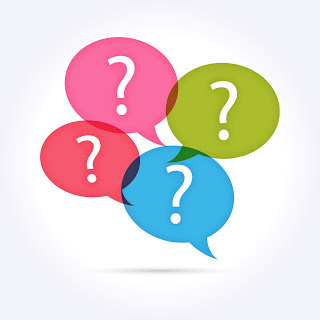 Q20: What are Qualities and Skill Set to Fill CIO Role? CIOs today need to play a different role and wear multiple hats, therefore, they come from different background, take diverse career path, there’s no one size fitting all skill or stereotypical image to portray a modern CIO, however, there are certain leadership qualities and desired skill set to fill the role.
Q20: What are Qualities and Skill Set to Fill CIO Role? CIOs today need to play a different role and wear multiple hats, therefore, they come from different background, take diverse career path, there’s no one size fitting all skill or stereotypical image to portray a modern CIO, however, there are certain leadership qualities and desired skill set to fill the role.
The digital CIOs reimagine IT as the business growth engine and lead changes via inquiries. A confident CIO needs to keep asking open-ended questions such as, "Why? Why not? What If?" They have to focus on guiding the company through the digital transformation, and create unique business value because IT is the significant element of any differentiated business capability and the defining factor for competitive advantage.
Follow us at: @Pearl_Zhu
Published on December 26, 2016 23:30
Three Effects, Three Decision-Making Pitfalls
 Decision-making is both art and science. The majority of leaders and professional spend a significant amount of time on making large or small decisions in the work and life. At today’s digital new normal with “VUCA” characteristics -Uncertainty, Complexity, Velocity, and Ambiguity, the capability to make effective decisions becomes a crucial leadership competency and professional capability. There is fuzziness in the decision because there is fuzziness in conflicting criteria, and there are hidden barriers on the way. Here are three effects which lead three potential pitfalls in decision-making.
Decision-making is both art and science. The majority of leaders and professional spend a significant amount of time on making large or small decisions in the work and life. At today’s digital new normal with “VUCA” characteristics -Uncertainty, Complexity, Velocity, and Ambiguity, the capability to make effective decisions becomes a crucial leadership competency and professional capability. There is fuzziness in the decision because there is fuzziness in conflicting criteria, and there are hidden barriers on the way. Here are three effects which lead three potential pitfalls in decision-making.
Bandwagon effect: The bandwagon effect is characterized by the probability of individual adoption increasing with respect to the proportion who have already done so. The tendency to follow the actions or beliefs of others can occur because individuals directly prefer to conform, or because individuals derive information from others. According to this concept, the increasing popularity of a product or phenomenon encourages more people to "get on the bandwagon," psychologically too. The bandwagon effect explains why there are fashion trends or brand effect. From a decision-making perspective, it means the majority of people follow the conventional wisdom in making judgment or decisions. In other words, as more people come to believe in something, others also "hop on the bandwagon" regardless of the underlying evidence. The potential decision-making pitfalls caused by bandwagon effect is because there is a lack of independent thinking or the structural process in making sound decisions cohesively.
Group Thinking or Abilene Paradox: Group Thinking or peer pressure is a term refers to a psychological phenomenon in which people strive for consensus within a group. In many cases, people will set aside their own personal beliefs or adopt the opinion of the rest of the group. From the variety of industry studies, group thinking is often caused by the homogeneous team setting; group polarization means that a group of people can make a more extreme decision than an individual. You'd think that a group would tend to democratize the diversified viewpoint and to moderate individual points of view. In fact, the opposite often occurs. In an Abilene paradox, a group of people collectively decide on a course of action that is counter to the preferences of many or all of the individuals in the group. The homogeneous team setting will make team members more vulnerable to peer pressure, risk avoidance, making biased decisions and sticking to the comfort zone.
The Ostrich Effect: The Ostrich Effect is the tendency to ignore a dangerous or risky situation, just like an ostrich will bury its head when faced with danger presumably: “If I can't see it, it doesn't exist.”.
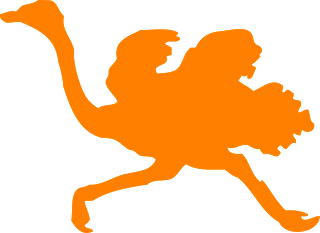 Either for decision-making or problem-solving, sometimes, people will demonstrate this kind of behavior by blotting out a problem from the mind instead of tackling the situation which threatens them. People make decisions only based on gut-feelings, and lack of sufficient information; or people only make the decisions for fixing symptoms, even though they know it might cause more issues for the long run. There are many variables in complex decision making, there are tradeoffs you have to leverage, you need you be courageous to face the problems in order to make effective decisions.
Either for decision-making or problem-solving, sometimes, people will demonstrate this kind of behavior by blotting out a problem from the mind instead of tackling the situation which threatens them. People make decisions only based on gut-feelings, and lack of sufficient information; or people only make the decisions for fixing symptoms, even though they know it might cause more issues for the long run. There are many variables in complex decision making, there are tradeoffs you have to leverage, you need you be courageous to face the problems in order to make effective decisions.
The reason decision making is often a difficult task because it is contextual and situational, it takes a unique individual to understand a situation and relate it to the present, and there is no magic formula to follow. An effective decision can be defined as an action you take that is logically consistent with the alternative you perceive, the information you get and the preference you have. Overcome bias and avoid those potential pitfalls, in order to achieve decision-making maturity.
Follow us at: @Pearl_Zhu
Published on December 26, 2016 23:26
The New Book “100 Creativity Ingredients” Introduction Chapter 2 Psychological Ingredients
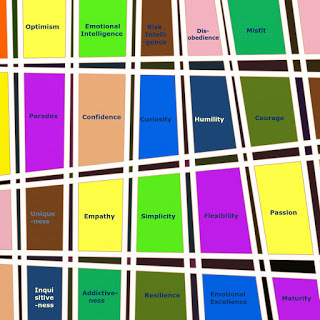 Historically, creativity and innovation would seem to have emerged with an instinct for survival, basic tools for hunting and gathering. So, there is a connection, with emotional equivalents, for surviving each day. Psychology either encourages or discourages innovation, to a gifted creative talent, being creative is something that they are, whether they are consciously being creative or not. It is the psychological state of the mind depending on what you consider creativity and being creative.
Historically, creativity and innovation would seem to have emerged with an instinct for survival, basic tools for hunting and gathering. So, there is a connection, with emotional equivalents, for surviving each day. Psychology either encourages or discourages innovation, to a gifted creative talent, being creative is something that they are, whether they are consciously being creative or not. It is the psychological state of the mind depending on what you consider creativity and being creative.
Emotional intelligence: Emotional Intelligence is the ability to identify and manage emotions well. It includes emotional awareness - the ability to identify your own emotions; the ability to harness emotions and apply them to tasks like creativity. Higher emotional intelligence helps you have an open mind, minimize biases, be cautiously optimistic, be an effective listener and be more creative. Emotional Intelligence is the tool to live a life with a balance. Intuition, idea generation can be in mind which is free of turbulence and achieve the balance. A high-EQ mind can turn on creativity switch more easily. And such minds are more objective, creative, accountable, empathetic, intellectual and progressive.
Confidence: Creativity is often an adventure full of risks, and confidence is the personality trait to unleash your creativity potential. Confident people with positive attitude see the bright side, they have a special mindset that rain or shine, leads them to positive outcomes. Confidence is often a reflection of your innate mentality; a positive mental attitude is focused on strategy, opportunities, to fuel creativity and inspire innovation. Innovators and innovative leaders have a ridiculous amount of self-confidence. If you are not sure of yourself, you won’t be able to convince others to follow your leadership and vision. And many times, you also must be willing to fail a lot and be very persistent and thick-skinned to make a successful innovation journey.
 Flexibility: Flexibility is a mental process which results in an action that tests a possible solution. Things either work or they do not. That action is creativity. Flexibility is an important trait of innovation. It is simply about how flexible people can see what’s around easily and effortlessly and discover a better way to do it. A flexible mind loves choices, enjoys making differences; feels comfortable to be unique and welcomes the diverse thoughts as a fountain of creativity. People with a flexible mind can work as a team more seamlessly as well. Flexibility allows an innovator to bend the rules as long as it is not harmful to the organization. As long as the flexibility s provided with necessary oversight by the management, such a working environment encourages collaborative thinking, and inspire creativity.
Flexibility: Flexibility is a mental process which results in an action that tests a possible solution. Things either work or they do not. That action is creativity. Flexibility is an important trait of innovation. It is simply about how flexible people can see what’s around easily and effortlessly and discover a better way to do it. A flexible mind loves choices, enjoys making differences; feels comfortable to be unique and welcomes the diverse thoughts as a fountain of creativity. People with a flexible mind can work as a team more seamlessly as well. Flexibility allows an innovator to bend the rules as long as it is not harmful to the organization. As long as the flexibility s provided with necessary oversight by the management, such a working environment encourages collaborative thinking, and inspire creativity.There is an emotional life cycle in creativity and innovation life cycle. The kind of emotions within a person that trigger an improvement/innovation process can be numerous and most likely will be a combination of emotions. This is an ongoing process just like the feeling to improve and to create.Follow us at: @Pearl_Zhu
Published on December 26, 2016 23:19
December 25, 2016
The Monthly “Dot Connections” to Celebrate Holidays Dec. 2016
Digital is the age of creativity and innovation, and creativity is all about connecting the dots.
The effects of an increasingly digitalized world are now reaching into every corner of businesses and every aspect of organizations. Digital is the age of creativity and innovation, take a break in the holidays to recharge your energy, and boost creativity via connecting dots and spreading the wisdom. Connecting the Dots to Celebrate Holidays
Creativity vs. Innovation : Creativity is infused with an inner cohesion and comes from a vision of uniqueness. Creativity needs a problem, and a creative person needs a purpose; Innovation is to reinvent business, but not to reinvent the wheels. Innovation is about reinventing the business direction and purpose at any time. It defines strategy, profitability and relevance at any given time. If you do not, you become commoditized and just like so many others who offer the same product or service. Innovation allows one to stand out and above the rest.Knowledge vs. Imagination Perhaps it is another chicken and the egg debate: Knowledge vs. Imagination, which one is more important? There is no imagination without knowledge, and there is no knowledge without imagination. Putting information in a human memory is not similar to data storage, as you have to sort through, transform it into the knowledge, and abstract the insight or recreate the new knowledge at the advanced level.Motivation vs. Inspiration Motivation and inspiration both are feeling encoded. You don't get motivated or inspired without feeling it, as their validity is on the perception of individuality. But, what's the difference between motivating and inspiring? And between feeling motivated and feeling inspired?.Perception vs. Personality Our perceptions (the way we think and how we express the thought) and our personalities (the character and attitudes, actions and reactions, etc) come from our exposure to the many variables and combinations of variables in a given environment. Is our perception based on the cognition, or the way of our thinking creates the unique personalities? Knowledge vs. Wisdom: Knowledge is just like any useful, resourceful information available with you in your brain instead of in the books, pen, drive or some other form….acquired formally, informally, generally etc. Wisdom is the transformation of YOU into “A REAL YOURSELF” for which your knowledge may help you sometimes facilitates too, but you need to have an inner drive to demonstrate wisdom.The “Future of CIO” Blog has reached 1.6 million page views with about #3300th blog posting in 59+ different categories of leadership, management, strategy, digitalization, change/talent, etc. The content richness is not for its own sake, but to convey the vision and share the wisdom. Blogging is not about writing, but about thinking and innovating the new ideas; it’s not just about WHAT to say, but about WHY to say, and HOW to say it. It reflects the color and shade of your thought patterns, and it indicates the peaks and curves of your thinking waves. Unlike pure entertainment, quality and professional content takes time for digesting, contemplation and engaging, and therefore, it takes time to attract the "hungry minds" and the "deep souls." It’s the journey to amplify diverse voices and deepen digital footprints, and it's the way to harness your innovative spirit.
Knowledge vs. Wisdom: Knowledge is just like any useful, resourceful information available with you in your brain instead of in the books, pen, drive or some other form….acquired formally, informally, generally etc. Wisdom is the transformation of YOU into “A REAL YOURSELF” for which your knowledge may help you sometimes facilitates too, but you need to have an inner drive to demonstrate wisdom.The “Future of CIO” Blog has reached 1.6 million page views with about #3300th blog posting in 59+ different categories of leadership, management, strategy, digitalization, change/talent, etc. The content richness is not for its own sake, but to convey the vision and share the wisdom. Blogging is not about writing, but about thinking and innovating the new ideas; it’s not just about WHAT to say, but about WHY to say, and HOW to say it. It reflects the color and shade of your thought patterns, and it indicates the peaks and curves of your thinking waves. Unlike pure entertainment, quality and professional content takes time for digesting, contemplation and engaging, and therefore, it takes time to attract the "hungry minds" and the "deep souls." It’s the journey to amplify diverse voices and deepen digital footprints, and it's the way to harness your innovative spirit.
Follow us at: @Pearl_Zhu
The effects of an increasingly digitalized world are now reaching into every corner of businesses and every aspect of organizations. Digital is the age of creativity and innovation, take a break in the holidays to recharge your energy, and boost creativity via connecting dots and spreading the wisdom. Connecting the Dots to Celebrate Holidays
Creativity vs. Innovation : Creativity is infused with an inner cohesion and comes from a vision of uniqueness. Creativity needs a problem, and a creative person needs a purpose; Innovation is to reinvent business, but not to reinvent the wheels. Innovation is about reinventing the business direction and purpose at any time. It defines strategy, profitability and relevance at any given time. If you do not, you become commoditized and just like so many others who offer the same product or service. Innovation allows one to stand out and above the rest.Knowledge vs. Imagination Perhaps it is another chicken and the egg debate: Knowledge vs. Imagination, which one is more important? There is no imagination without knowledge, and there is no knowledge without imagination. Putting information in a human memory is not similar to data storage, as you have to sort through, transform it into the knowledge, and abstract the insight or recreate the new knowledge at the advanced level.Motivation vs. Inspiration Motivation and inspiration both are feeling encoded. You don't get motivated or inspired without feeling it, as their validity is on the perception of individuality. But, what's the difference between motivating and inspiring? And between feeling motivated and feeling inspired?.Perception vs. Personality Our perceptions (the way we think and how we express the thought) and our personalities (the character and attitudes, actions and reactions, etc) come from our exposure to the many variables and combinations of variables in a given environment. Is our perception based on the cognition, or the way of our thinking creates the unique personalities?
 Knowledge vs. Wisdom: Knowledge is just like any useful, resourceful information available with you in your brain instead of in the books, pen, drive or some other form….acquired formally, informally, generally etc. Wisdom is the transformation of YOU into “A REAL YOURSELF” for which your knowledge may help you sometimes facilitates too, but you need to have an inner drive to demonstrate wisdom.The “Future of CIO” Blog has reached 1.6 million page views with about #3300th blog posting in 59+ different categories of leadership, management, strategy, digitalization, change/talent, etc. The content richness is not for its own sake, but to convey the vision and share the wisdom. Blogging is not about writing, but about thinking and innovating the new ideas; it’s not just about WHAT to say, but about WHY to say, and HOW to say it. It reflects the color and shade of your thought patterns, and it indicates the peaks and curves of your thinking waves. Unlike pure entertainment, quality and professional content takes time for digesting, contemplation and engaging, and therefore, it takes time to attract the "hungry minds" and the "deep souls." It’s the journey to amplify diverse voices and deepen digital footprints, and it's the way to harness your innovative spirit.
Knowledge vs. Wisdom: Knowledge is just like any useful, resourceful information available with you in your brain instead of in the books, pen, drive or some other form….acquired formally, informally, generally etc. Wisdom is the transformation of YOU into “A REAL YOURSELF” for which your knowledge may help you sometimes facilitates too, but you need to have an inner drive to demonstrate wisdom.The “Future of CIO” Blog has reached 1.6 million page views with about #3300th blog posting in 59+ different categories of leadership, management, strategy, digitalization, change/talent, etc. The content richness is not for its own sake, but to convey the vision and share the wisdom. Blogging is not about writing, but about thinking and innovating the new ideas; it’s not just about WHAT to say, but about WHY to say, and HOW to say it. It reflects the color and shade of your thought patterns, and it indicates the peaks and curves of your thinking waves. Unlike pure entertainment, quality and professional content takes time for digesting, contemplation and engaging, and therefore, it takes time to attract the "hungry minds" and the "deep souls." It’s the journey to amplify diverse voices and deepen digital footprints, and it's the way to harness your innovative spirit.Follow us at: @Pearl_Zhu
Published on December 25, 2016 23:36
The New Book “100 Creativity Ingredients” Introduction Chapter 1: Intellectual Ingredients
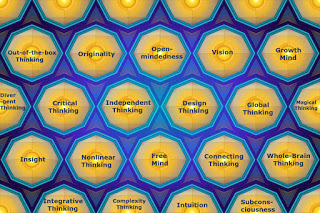 Creativity is not a “thing,” it’s a process that happens as a proactive mental activity to a problem. The nature of consciousness is important in creativity. Creativity is the high level of thinking, and thinking is probably one of the most difficult things for human beings, the thinking capability well defines the difference between humans and other creatures; and the level of thinking may also well reflect who we are.
Creativity is not a “thing,” it’s a process that happens as a proactive mental activity to a problem. The nature of consciousness is important in creativity. Creativity is the high level of thinking, and thinking is probably one of the most difficult things for human beings, the thinking capability well defines the difference between humans and other creatures; and the level of thinking may also well reflect who we are.
Out-of-the-box thinking: Out-of-the-box-thinking or thinking outside of the box is the metaphor that means to think unconventionally. It means to break down some outdated rules and let the creative mind run free for a while. The box is usually a mental construct made up of personal or environmental components that one operates within; so thinking outside “the box” means doing something outside of the confines of the construct, in a new and innovative way. Thinking outside of the box means you are in a continuous learning mode and have the courage to step into the unfamiliar territory. Because great things don’t happen inside the comfort zone, so we all should broaden our point of interest and try new things to extend our thinking box.
Growth Mind: Growth mind is the progress thinking for making continuous improvement. To be innovative requires a growth mindset, which is a willingness to “not know,” and be able to source possibilities in the emergence space, to be curious and receptive to improvisation and experimentation, and allow failing, from letting go of the current reality to allowing and unknown future state to emerge. Creativity requires openness to new experiences or opening your eyes to see old things in a new and different way, with the growth mind to explore new possibilities. Creativity starts with a knowledge base, and then openness to new experience or detecting things you didn’t know or applying knowledge from other domains to a new one, it results in creativity.
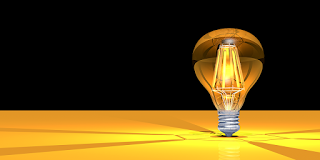 Nonlinear Thinking: In the real physical world, most relationships are nonlinear; Most things have limits to their scale; network connections grow non-linearly with nodes etc. Nature is nonlinear, nonlinear thinking is an out-of-the-box thinking process for solving problems in a creative way. One characteristic of nonlinear systems is that small changes can have large impacts. A small error, inconsistency or change in a system specification can totally ruin its performance. Similarly, achieving the desired impact can sometimes be as the result of a very small initiative or decision. That means if you pick the right thing to alter, you can sometimes achieve enormous outcomes at little or no expenditure of effort on your part, that is the creative magic of nonlinear thinking, but surely this approach requires great insights and knowledge.
Nonlinear Thinking: In the real physical world, most relationships are nonlinear; Most things have limits to their scale; network connections grow non-linearly with nodes etc. Nature is nonlinear, nonlinear thinking is an out-of-the-box thinking process for solving problems in a creative way. One characteristic of nonlinear systems is that small changes can have large impacts. A small error, inconsistency or change in a system specification can totally ruin its performance. Similarly, achieving the desired impact can sometimes be as the result of a very small initiative or decision. That means if you pick the right thing to alter, you can sometimes achieve enormous outcomes at little or no expenditure of effort on your part, that is the creative magic of nonlinear thinking, but surely this approach requires great insights and knowledge.
Creativity is the high-level thinking; creativity is as much defined by the problem as by the capacity of the individual to connect things to resolve that problem in new and sometimes unexpected ways. Once we state to formulate an idea, it can lead us to make connections with other experiences we have had in our lives until we finally have an accomplishment we are satisfied with.
Follow us at: @Pearl_Zhu
Published on December 25, 2016 23:33
December 24, 2016
The Thoughts, Quotes, and Poems to Celebrate the Spirit of Christmas!
A good conscience is a continual Christmas. - Benjamin Franklin
 It’s the Christmas Ever, and it’s the holiday week, it’s not just the time for shopping or relaxing, but also the time to recharging and reflection. It is not just the time to gain a few pounds but also doing more PONDERING. Here is the set of thoughts, quotes, and poems to celebrate the spirit of Christmas.
It’s the Christmas Ever, and it’s the holiday week, it’s not just the time for shopping or relaxing, but also the time to recharging and reflection. It is not just the time to gain a few pounds but also doing more PONDERING. Here is the set of thoughts, quotes, and poems to celebrate the spirit of Christmas.
The Inspirational Quotes: A mind is like a parachute. It doesn't work if it is not open." - Frank Zappa Words are powerful. They have the ability to inspire, motivate, and persuade or discourage, dismiss, and dissuade. In the workplace, a positive collaborative mindset can mean the difference according to me believe in teamwork.
The Spirit of Christmas Carol It is the holiday season and it is the Christmas Eve, even though we honor and celebrate the holidays in different ways, there are common threads to make best wishes; peace on earth, human progress, the abundance of wisdom, equal opportunity, empathy and more... Charles Dickens wrote a novella, "A Christmas Carol," that we probably all have read at least once always worth reading again, is it time to revisit the spirit of Christmas Carol at Christmas Eve?
Three Perspectives of Human Wisdom? There are lots of smarts, lots of ability, and lots of attitudes - very, very little wisdom. "But how do I get wisdom?" You ask. People have asked that for millennia. You've been hearing the answer for millennia, too - you just flatly refuse to acknowledge it. What wisdom does humanity need to develop in the present day situations? Is there something we can do as common people or individuals of a society? How to gain human wisdom anyway?
 Merry Christmas with Poetic Wisdom: Christmas Eve may not always see the stars, but poem goes down the page like shooting star; Christmas Day may not always be covered by snow whit, but the thought can dance like snowflake; Christmas Day may not always be full of joy; but your heart shall fill with sunshine; Christmas Day may not always be so poetic; but we can always enjoy some great poems.
Merry Christmas with Poetic Wisdom: Christmas Eve may not always see the stars, but poem goes down the page like shooting star; Christmas Day may not always be covered by snow whit, but the thought can dance like snowflake; Christmas Day may not always be full of joy; but your heart shall fill with sunshine; Christmas Day may not always be so poetic; but we can always enjoy some great poems.
Free Your Mind: Free = without limits; Mind = Individual Consciousness. A free mind is like the cloud, flowing over; like a river, running forward; like a seed, sprouting up; like a butterfly, dancing around; like seasons of change, with shape and shapeless; visible and invisible; color and colorless; tangible and intangible, nature and nurtured. ?
The spirit of holidays is the state of mind: being thoughtful, peaceful, playful, colorful; and grateful; and it’s the time to refresh your mind and recharge your energy. Follow us at: @Pearl_Zhu
 It’s the Christmas Ever, and it’s the holiday week, it’s not just the time for shopping or relaxing, but also the time to recharging and reflection. It is not just the time to gain a few pounds but also doing more PONDERING. Here is the set of thoughts, quotes, and poems to celebrate the spirit of Christmas.
It’s the Christmas Ever, and it’s the holiday week, it’s not just the time for shopping or relaxing, but also the time to recharging and reflection. It is not just the time to gain a few pounds but also doing more PONDERING. Here is the set of thoughts, quotes, and poems to celebrate the spirit of Christmas. The Inspirational Quotes: A mind is like a parachute. It doesn't work if it is not open." - Frank Zappa Words are powerful. They have the ability to inspire, motivate, and persuade or discourage, dismiss, and dissuade. In the workplace, a positive collaborative mindset can mean the difference according to me believe in teamwork.
The Spirit of Christmas Carol It is the holiday season and it is the Christmas Eve, even though we honor and celebrate the holidays in different ways, there are common threads to make best wishes; peace on earth, human progress, the abundance of wisdom, equal opportunity, empathy and more... Charles Dickens wrote a novella, "A Christmas Carol," that we probably all have read at least once always worth reading again, is it time to revisit the spirit of Christmas Carol at Christmas Eve?
Three Perspectives of Human Wisdom? There are lots of smarts, lots of ability, and lots of attitudes - very, very little wisdom. "But how do I get wisdom?" You ask. People have asked that for millennia. You've been hearing the answer for millennia, too - you just flatly refuse to acknowledge it. What wisdom does humanity need to develop in the present day situations? Is there something we can do as common people or individuals of a society? How to gain human wisdom anyway?
 Merry Christmas with Poetic Wisdom: Christmas Eve may not always see the stars, but poem goes down the page like shooting star; Christmas Day may not always be covered by snow whit, but the thought can dance like snowflake; Christmas Day may not always be full of joy; but your heart shall fill with sunshine; Christmas Day may not always be so poetic; but we can always enjoy some great poems.
Merry Christmas with Poetic Wisdom: Christmas Eve may not always see the stars, but poem goes down the page like shooting star; Christmas Day may not always be covered by snow whit, but the thought can dance like snowflake; Christmas Day may not always be full of joy; but your heart shall fill with sunshine; Christmas Day may not always be so poetic; but we can always enjoy some great poems.
Free Your Mind: Free = without limits; Mind = Individual Consciousness. A free mind is like the cloud, flowing over; like a river, running forward; like a seed, sprouting up; like a butterfly, dancing around; like seasons of change, with shape and shapeless; visible and invisible; color and colorless; tangible and intangible, nature and nurtured. ?
The spirit of holidays is the state of mind: being thoughtful, peaceful, playful, colorful; and grateful; and it’s the time to refresh your mind and recharge your energy. Follow us at: @Pearl_Zhu
Published on December 24, 2016 22:45
The New Book “100 Creativity Ingredients” Introduction
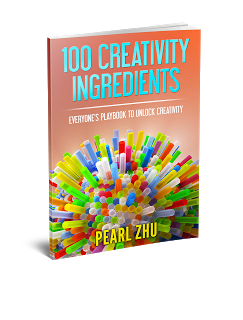 In recent years, creativity has become a very highly valued skill, and many think it is the #1 most wanted professional capability in the digital era. We all have unlimited creativity potential and intrinsic ability to think outside of the box, but we need to learn how to unlock it. Creativity is a function of imagination, multidimensional thinking, knowledge, psychology, activities, and motivation. The purpose of “
100 Creativity Ingredients - Everyone’s Playbook to Unlock Creativity
“is to classify, scrutinize, articulate, and share insight about one hundred special creativity ingredients, to paint the picture with them, to add colors on them, to embed the music into them, and to make the story via them, in order to unleash our collective creativity potential.
In recent years, creativity has become a very highly valued skill, and many think it is the #1 most wanted professional capability in the digital era. We all have unlimited creativity potential and intrinsic ability to think outside of the box, but we need to learn how to unlock it. Creativity is a function of imagination, multidimensional thinking, knowledge, psychology, activities, and motivation. The purpose of “
100 Creativity Ingredients - Everyone’s Playbook to Unlock Creativity
“is to classify, scrutinize, articulate, and share insight about one hundred special creativity ingredients, to paint the picture with them, to add colors on them, to embed the music into them, and to make the story via them, in order to unleash our collective creativity potential.
Chapter 1 Intellectual Ingredients: Creativity is the high level of thinking. Thinking is probably one of the most difficult things for human beings, the thinking capability well defines the difference between human and other creatures, and the level of thinking may also well reflect who we are.
Chapter 2 Psychological Ingredients: If you consider being creative as a way of thinking, of imagining, of expression, of perceiving things, of inventing, of inspiring, etc, then it happens every day, multiple times a day. To gifted creatives, being creative is something that they are, whether they're consciously being creative or not. It is the psychological state of the mind depending on what you consider creativity and being creative.
Chapter 3 Knowledge and Capability Ingredients: There is a philosophical connection between knowledge and creativity. Knowledge is path-dependent. This means that to discover an opportunity, you should have previous knowledge in the field to be able to get recognized. Imagination is also needed to be able to apply this previous knowledge to the different context. Nowadays creativity is an important professional capability, and the multitude of professional capabilities can enforce creativity as well.
Chapter 4 Activity Ingredients: While we each have the enormous creative capacity, our willingness to exercise and express it becomes more complicated. Creative people are inspired to think and work nearly every day on creating, not reactively waiting for the “Aha” moment, but proactively stimulating the new energy with the fountain of creativity.
Chapter 5 Motivational Ingredients: Creativity has many forms and manifestations. Take the standpoint that creativity has its starting point within an individual. Creativity can manifest in a collective environment. While the individual contributions provide the 'building block" of creativity, it is the collective consensus on what to do with them that is exciting.
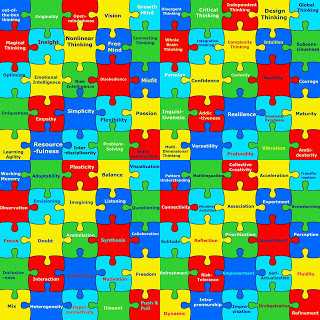 The people who helped to shape our world are some of the broadest and innovative thinkers. Creativity seems to be the free flow of life force energy. It is a wellspring we can learn to tap. Creativity is like a color spectrum. There are commonalities that are relevant to all colors which reflect the spectrum of light. Such metaphor connects the dot back to the nature of creativity. Creativity is innate with many special ingredients; and creativity can be developed if the conditions are right and there is knowledge, love, inspiration, encouragement and permission. Creativity is a long-term endeavor. Creativity can be abundant.
The people who helped to shape our world are some of the broadest and innovative thinkers. Creativity seems to be the free flow of life force energy. It is a wellspring we can learn to tap. Creativity is like a color spectrum. There are commonalities that are relevant to all colors which reflect the spectrum of light. Such metaphor connects the dot back to the nature of creativity. Creativity is innate with many special ingredients; and creativity can be developed if the conditions are right and there is knowledge, love, inspiration, encouragement and permission. Creativity is a long-term endeavor. Creativity can be abundant.Creativity habit needs to be cultivated via practices, creativity muscle needs to be strengthened via daily grinding, and creativity excellence can be achieved ultimately. Creativity formula has many unique ingredients, read this book “100 Creativity Ingredients” to figure out.Follow us at: @Pearl_Zhu
Published on December 24, 2016 22:37
December 23, 2016
The Popular Quotes Collection V in “Digital Master” Book Series
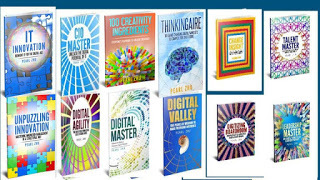 “Digital Master” is the series of guidebooks (12+ books) to perceive the multifaceted impact digital is making to the business and our society, help forward-thinking organizations navigate through the digital journey in a systematic way, and avoid “rogue digital.” Here is the set of popular quotes for conveying the digital vision and sharing the unique insight about the digital transformation.
“Digital Master” is the series of guidebooks (12+ books) to perceive the multifaceted impact digital is making to the business and our society, help forward-thinking organizations navigate through the digital journey in a systematic way, and avoid “rogue digital.” Here is the set of popular quotes for conveying the digital vision and sharing the unique insight about the digital transformation.
 It Innovation: Reinvent It for the Digital Age by Pearl Zhu
It Innovation: Reinvent It for the Digital Age by Pearl Zhu
“The digital philosophy is to live as “customers,” when practicing IT management.” ― Pearl Zhu, It Innovation: Reinvent It for the Digital Age
“In essence, innovation is the use of something that is new and unique, and you are able to create its business value.” ― Pearl Zhu, It Innovation: Reinvent It for the Digital Age
“Silos build the wall in people’s minds and tie the knots in their hearts.”― Pearl Zhu, It Innovation: Reinvent It for the Digital Age
“For IT, information management is fundamental, and innovation management is value-added.” ― Pearl Zhu, It Innovation: Reinvent It for the Digital Age
“Digital organizations can become hyper-connected and “super-creative” via dealing with innovation dilemmas collectively.” ― Pearl Zhu, It Innovation: Reinvent It for the Digital Age
 Thinkingaire: 100 Game-Changing Digital Mindsets to Compete for the Future by Pearl Zhu
Thinkingaire: 100 Game-Changing Digital Mindsets to Compete for the Future by Pearl Zhu
“Open the mind to be on a path to a better version of yourself.” ― Pearl Zhu, Thinkingaire: 100 Game-Changing Digital Mindsets to Compete for the Future
“Thought leadership is by nature evolutionary, in that it must always be part of an ever-evolving flow.” ― Pearl Zhu, Thinkingaire: 100 Game Changing Digital Mindsets to Compete for the Future
“Inspiration is the result of moments of insight and a key component of internal “drive.” ― Pearl Zhu, Thinkingaire: 100 Game-Changing Digital Mindsets to Compete for the Future
 CIO Master: Unleash the Digital Potential of It b
CIO Master: Unleash the Digital Potential of It b
“CIOs need to be IT evangelists and learn to sell, speak business.” ― Pearl Zhu, CIO Master: Unleash the Digital Potential of It
“A problem-solving mind focuses on keeping the end in mind, to solve PROBLEMS in optimal ways.” ― Pearl Zhu, CIO Master: Unleash the Digital Potential of It
“CIOs need to be IT evangelists and learn to sell, speak business.” ― Pearl Zhu, CIO Master: Unleash the Digital Potential of It
 Talent Master: 199+ Questions to See Talent from Different Angles by Pearl Zhu“People who can solve problems in a new way are the innovators.” ― Pearl Zhu, Talent Master: 199+ Questions to See Talent from Different Angles
Talent Master: 199+ Questions to See Talent from Different Angles by Pearl Zhu“People who can solve problems in a new way are the innovators.” ― Pearl Zhu, Talent Master: 199+ Questions to See Talent from Different Angles
“Intuition matters but, pay more attention to the unconscious bias.” ― Pearl Zhu, Talent Master: 199+ Questions to See Talent from Different Angles
“Innovation is a progress, and progress in simplicity.” ― Pearl Zhu, Talent Master: 199+ Questions to See Talent from Different Angles
“Every person is unique, put the right people with the right capability to the right position to solve the right problems.” ― Pearl Zhu, Talent Master: 199+ Questions to See Talent from Different Angles
“Positive Thinking and creativity are the powerful pairs to push the world forward.” ― Pearl Zhu, Talent Master: 199+ Questions to See Talent from Different Angles
 Digitizing Boardroom: The Multifaceted Aspects of Digital Ready Boards by Pearl Zhu“An IT friendly Board should change the perspective to understand the power of information and the potential of technology.” ― Pearl Zhu, Digitizing Boardroom: The Multifaceted Aspects of Digital Ready Boards
Digitizing Boardroom: The Multifaceted Aspects of Digital Ready Boards by Pearl Zhu“An IT friendly Board should change the perspective to understand the power of information and the potential of technology.” ― Pearl Zhu, Digitizing Boardroom: The Multifaceted Aspects of Digital Ready Boards
“Every decision by every decision-maker needs to be informed by an understanding of how technology changes business processes.” ― Pearl Zhu, Digitizing Boardroom: The Multifaceted Aspects of Digital Ready Boards
“It is what the “I” stands for - Information, Innovation, Insight, Improvement, or Influence, that needs to be represented by CIOs in the Boardroom.” ― Pearl Zhu, Digitizing Boardroom: The Multifaceted Aspects of Digital Ready Boards
“Digital transformation represents a break with the past, having a high level of impact and complexity.” ― Pearl Zhu, Digitizing Boardroom: The Multifaceted Aspects of Digital Ready Boards
“Corporate brand, culture, knowledge, and risk management are all boardroom concerns.” ― Pearl Zhu, Digitizing Boardroom: The Multifaceted Aspects of Digital Ready Boards
Follow us at: @Pearl_Zhu
Published on December 23, 2016 22:29
The Nature and Nurture of Digital CIOs
 Due to changing nature of technology and multifaceted impact of modern IT organization, the role of the Chief Information Officer is a very tricky one and hard to fill. The problem is heavily masked because the position is often filled with the wrong person. Contemporary CIOs are expected to play multiple personas; besides being the tactical IT manager, leadership is considered the top attribute for CIOs. So are digital CIOs nature or nurtured? What are the most important attributes of IT leadership, and how can they best be attained?
Due to changing nature of technology and multifaceted impact of modern IT organization, the role of the Chief Information Officer is a very tricky one and hard to fill. The problem is heavily masked because the position is often filled with the wrong person. Contemporary CIOs are expected to play multiple personas; besides being the tactical IT manager, leadership is considered the top attribute for CIOs. So are digital CIOs nature or nurtured? What are the most important attributes of IT leadership, and how can they best be attained?
Personality is nature, but skills are nurtured: Either you are introvert, extrovert or ambivert, CIOs today need to be a dynamic person with open, growth and complexity mindset, have high ability to handle personal attributes, manage impressions, communications to suite situations so as to make things happen. Good personality/skills testing covers critical thinking, problem-solving, handling pressure, creativity, innovation, inventiveness and communications. There is very little concrete evidence for predicting business success via personality tests and even less for evidence that people fit neatly into any of the hundreds of potential categories out there. Even personality is nature, the thinking and leadership capability can be developed if you have a growth mindset. CIOs need to build hardcore expertise and develop skills beyond technology, based on the understanding of their particular organization's current and potential corporate structure, senior management style, and strategic plan. CIOs are strong generalists – with exposure to all the different business areas. only a few other executives have the opportunity to develop such a deep understanding of the wider business. CIOs need to develop a broad skillset beyond technology. Coupled with the ability to understand, and translate “tech-talk.” Among other skills, they need strong business orientation and a proven ability to bring the benefits of IT to solve business issues They translate from one conversation to the other seamlessly.
Creativity and cognitive ability are both nature and nurtured: Although that most of IT operations involve analytical and logical work, some argue it is the creative mind better suited for top leadership. A digital CIO as “Chief Intrapreneur Officer” would keep everyone involved and foster an environment of creative thinking and critical thinking. Digital CIOs need to think of new and uncommon ways how IT can contribute to the corporation and help the business to make right strategy with a growth mindset. Good intrapreneur-leaders explain the big “whys” clearly, to articulate the strategic rationale behind the venture, as more often than not, intrapreneurship is about balancing innovation with other organizational priorities, it presents a possibly even greater challenge and reward. The CIO needs to be able to recognize areas of deficiencies and inefficiencies, then ask the question 'How can we...? The heart of entrepreneurship is about changes, and organizations no matter large or small, all face the unprecedented change, uncertainty, and accelerated business dynamic, intrapreneur leaders are not only self-motivated, but also motivate teams to cultivate change capabilities, and continue to improve. Besides creativity, digital CIO needs to have varying thinking skills and cognitive capabilities:- Critical thinking and analytical reasoning- Complex problem solving and analysis- Application of knowledge and skills in real-world settings- Location, organization, and evaluation of information from multiple sources
 The CIO’s “DNA” is nature, but the leadership quality is nurtured: The CIOs’ leadership authenticity is based on their “DNA” in nature. However, the qualification of digital IT leadership can only be achieved via the combination of character, learning agility, life experiences, knowledge, and multifaceted and recombinant professional capabilities. The CIO should have both broad business acumen and deep technical expertise as well, with the capability to speak both dialects fluently. The CIO has to be flexible, adaptable, and able to adjust the lingo to suit the audience, sometimes soften it up and drop the technical jargon, other times diving into the bits and bytes level. As a top business leader, the CIO needs to understand their environment and playing field to develop a plan to harness the opportunities you identified. The CIO does not need to be technically directly involved, but a technical background is good to have to be able to manage the team. The team needs to be able to trust the CIO and the CIO needs to understand them to be able to manage them. To be the most effective leader, you need to display the hard tech skills and knowledge, but more importantly, you need to be welcomed and invited to the table, be able to listen and translate business needs (what's said, and what's not) into actionable states. It is about striking a balance of management, leadership, and technical expertise/IT skills.
The CIO’s “DNA” is nature, but the leadership quality is nurtured: The CIOs’ leadership authenticity is based on their “DNA” in nature. However, the qualification of digital IT leadership can only be achieved via the combination of character, learning agility, life experiences, knowledge, and multifaceted and recombinant professional capabilities. The CIO should have both broad business acumen and deep technical expertise as well, with the capability to speak both dialects fluently. The CIO has to be flexible, adaptable, and able to adjust the lingo to suit the audience, sometimes soften it up and drop the technical jargon, other times diving into the bits and bytes level. As a top business leader, the CIO needs to understand their environment and playing field to develop a plan to harness the opportunities you identified. The CIO does not need to be technically directly involved, but a technical background is good to have to be able to manage the team. The team needs to be able to trust the CIO and the CIO needs to understand them to be able to manage them. To be the most effective leader, you need to display the hard tech skills and knowledge, but more importantly, you need to be welcomed and invited to the table, be able to listen and translate business needs (what's said, and what's not) into actionable states. It is about striking a balance of management, leadership, and technical expertise/IT skills.
The digital CIOs’ effectiveness is based on their leadership authenticity (nature) and qualification (nurture). At today’s hyper-connected, over-complex world, digital CIOs need to have both business acumen and technological vision, but more importantly, they need to have a growth mindset with a strong leadership brand to make influence via expertises in their domains and digital ecosystem.
Follow us at: @Pearl_Zhu
Published on December 23, 2016 22:21
December 22, 2016
The Weekly Insight of the “Future of CIO” 12/23/ 2016
 The “Future of CIO” Blog has reached 1.5 million page views with 3300+ blog posting in 59+ different categories of leadership, management, strategy, digitalization, change/talent, etc. The content richness is not for its own sake, but to convey the vision and share the wisdom. Here is the weekly insight about digital leadership, IT Management, and Talent Management.
The “Future of CIO” Blog has reached 1.5 million page views with 3300+ blog posting in 59+ different categories of leadership, management, strategy, digitalization, change/talent, etc. The content richness is not for its own sake, but to convey the vision and share the wisdom. Here is the weekly insight about digital leadership, IT Management, and Talent Management.
The Weekly Insight of the “Future of CIO” 12/23/2016The new book “100 Creativity Ingredients -Everyone’s Playbook to Unlock Creativity” Preview, Slideshare: In recent years, creativity has become a very highly valued skill, and many think it is the #1 most wanted professional capability in the digital era. We all have unlimited creativity potential and intrinsic ability to think outside of the box, but we need to learn how to unlock it. Creativity is a function of imagination, multidimensional thinking, knowledge, psychology, activities, and motivation. The purpose of “100 Creativity Ingredients - Everyone’s Playbook to Unlock Creativity “is to classify, scrutinize, articulate, and share insight about one hundred special creativity ingredients, to paint the picture with them, to add colors on them, to embed the music into them, and to make the story via them, in order to unleash our collective creativity potential. A set of Q&As (II) to Keep IT Digital Fit: Modern CIOs face many challenges, it is not sufficient to only keep the lights on. Regardless of which industry or the nature of organization you are in, being a digital leader will need to master the art of creating unique, differentiating value from piles of commoditized technologies and take advantage of the emergent digital trend as well. Digital CIOs have multiple personas, “Chief Innovation Officer,” “Chief Insight Officer,” “Chief Improvement Officer,” “Chief Information Officer,” and here, we discuss CIOs as “Chief Inquisitive Officer,” with a set of Q&As to lead the digital transformation.
A “Skeptical Board” to Advocate Innovation The Corporate Board plays a critical role in business strategy oversight, monitoring execution, advising digital transformation, and setting tones for talent management. The boards are also transforming from compliance-driven to performance oriented to get digital ready. In practice, the board's role is to pull management out of the trees to see the forest; to understand the business landscape and how it will address it; to continue questioning on important issues where the management's answers do not make sense, and to show the constructive skepticism for brainstorming changes and advocating innovation.
The Multitude of IT focus at the Era of Digital Renaissance: Digital transformation represents a break with the past, with a high level of impact and complexity. Transformation efforts need to be undertaken as the means of getting to a defined different capability to accomplish a set of defined business goals. IT plays a critical role in catalyzing the digital shift because IT is a business integrator and capability builder of the organization. At the digital age, CIOs need to play multiple roles, to run IT with the multitude of focus at the era of digital renaissance.
 Taking a Step-Wise Approach for Leading Digital Transformation: At the high maturity level, organizations have to stretch out in every business dimension for driving innovations and the full-fledged digital transformation. Either be a disrupter or being disrupted, digital makes significant impacts on every aspect of the business from people, processes, to technology and capability both horizontally and vertically. And organizations have to take a step-wise approach, continue assessing, fine-tuning and adapting, ride above the learning curve and take the journey of digital transformation steadfastly.
Taking a Step-Wise Approach for Leading Digital Transformation: At the high maturity level, organizations have to stretch out in every business dimension for driving innovations and the full-fledged digital transformation. Either be a disrupter or being disrupted, digital makes significant impacts on every aspect of the business from people, processes, to technology and capability both horizontally and vertically. And organizations have to take a step-wise approach, continue assessing, fine-tuning and adapting, ride above the learning curve and take the journey of digital transformation steadfastly.
Blogging is not about writing, but about thinking and innovating the new ideas; it’s not just about WHAT to say, but about WHY to say, and HOW to say it. It reflects the color and shade of your thought patterns, and it indicates the peaks and curves of your thinking waves. Unlike pure entertainment, quality and professional content takes time for digesting, contemplation and engaging, and therefore, it takes the time to attract the "hungry minds" and the "deep souls." It’s the journey to amplify diverse voices and deepen digital footprints, and it's the way to harness your innovative spirit.
Follow us at: @Pearl_Zhu
Published on December 22, 2016 22:39



